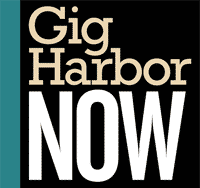Community Transportation
Buses crossing Narrows Bridge will pay tolls again starting this fall
Public transit will no longer enjoy a free ride across two Washington bridges this fall.
Starting Oct. 1, operators of public and private bus services must pay tolls on the the Tacoma Narrows Bridge as well as the Highway 520 floating bridge. Vanpool and public rideshare services, most of which are offered by transit agencies, too.
They all enjoy an exemption now. But this past session, as state lawmakers looked for ways to fill a billion-dollar hole in the transportation budget, they directed the Washington State Transportation Commission to erase the carveouts.
The repeal is in the six-year, $3.2 billion revenue package passed by the Legislature and signed by Gov. Bob Ferguson. The marquee item — a 6-cent increase in the state’s gas tax — is counted on to produce nearly half the money. Ditching the toll exemption is projected to raise roughly $1 million a year.
“We were disappointed that the state Legislature felt this policy was needed to fund the gap on the backs of public transit users and providers,” said Justin Leighton, executive director of the Washington State Transit Association.
All publicly or privately owned or operated transit buses, vans, and rideshare vehicles will pay bridge tolls when the exemption goes away. School buses will continue to be exempt.
Pierce Transit runs buses over the Tacoma Narrows span and King County Metro runs buses across the Highway 520 floating bridge.
The rules will also be in force when tolling begins on the Interstate 5 bridge across the Columbia River as part of the project to replace the span linking Oregon and Washington. Tolling on that bridge is projected to begin in 2027.
On the Narrows Bridge, it’s a return to a prior practice. Pierce Transit had paid tolls on that span until 2019, when it secured an exemption from the Washington State Transportation Commission.
Though disappointed, Pierce Transit recognizes that it was “a necessary tradeoff to ensure transit funding remained largely intact and kept most transit projects on track,” Communications Director Rebecca Japhet said.
Pierce Transit will shell out approximately $61,380 a year in bus tolls, she said. There will be added expenses for its Rideshare program. The toll would likely be incorporated into the rideshare fee for groups that use the Narrows Bridge at a future rate change, she said.
This will be the first time transit providers pay to traverse the floating bridge.
King County Metro is assessing the cost. The toll will depend on the type of vehicle and the time of day it crosses Lake Washington.
Based on current service levels, there are 118,000 buses, and 100,000 vanpool, Access paratransit and Community Access Transit vehicles that travel across the floating bridge annually, said spokesman Jeff Switzer.

